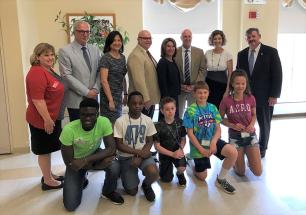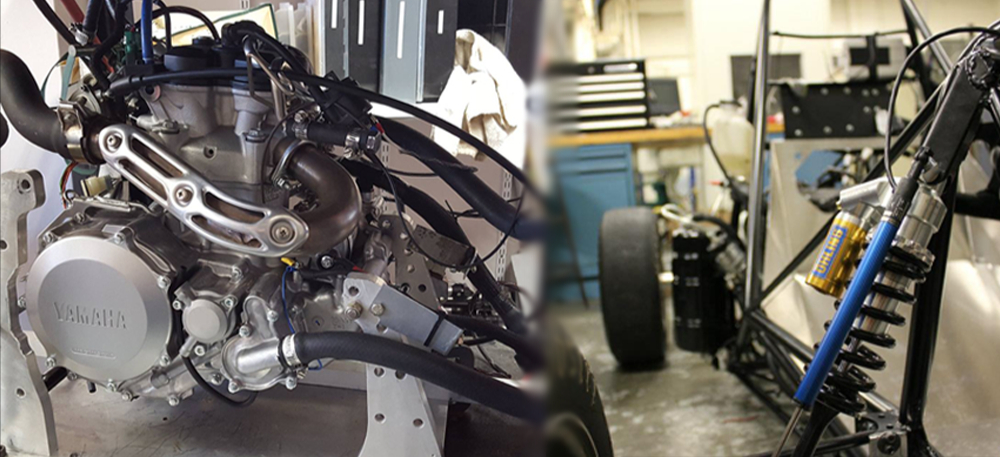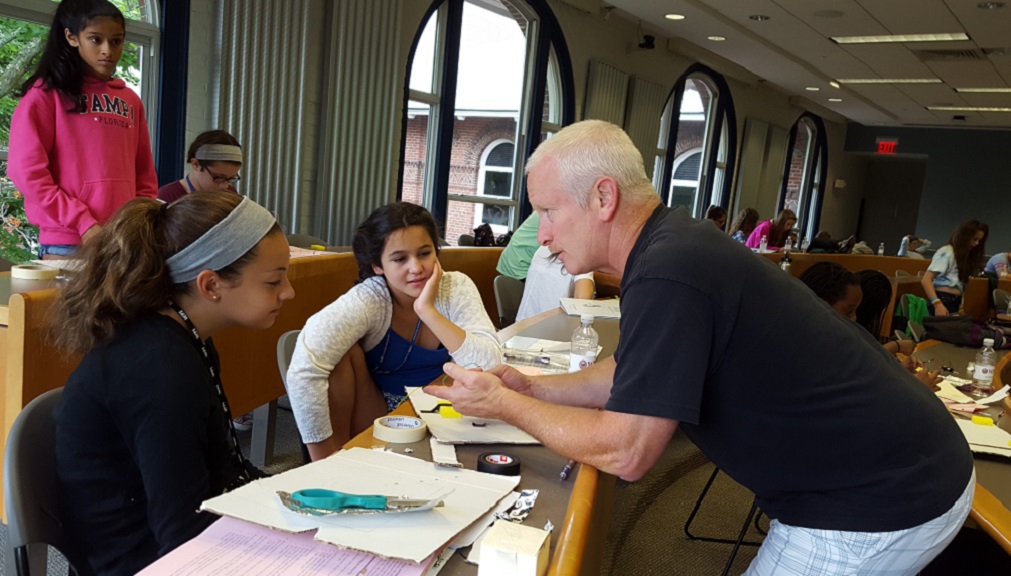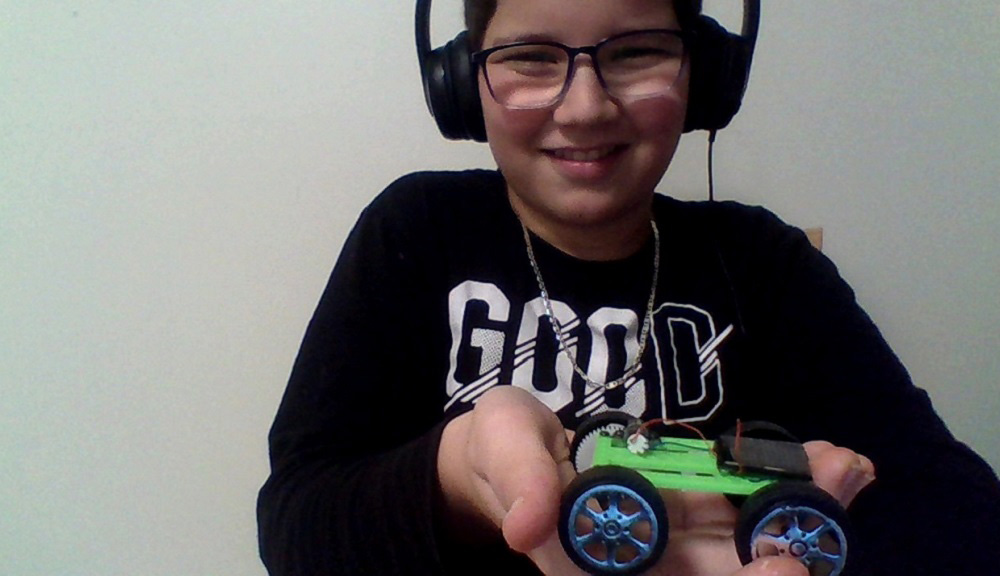A robotics program led by WPI will help prepare the next generation of advanced manufacturing employees with the skills they need through summer and after-school programs, giving them hands-on experience and training in collaborative robotics.
The program, geared for middle and high school students, integrates the fields of robotics, engineering and manufacturing with the cutting-edge work being done in the WPI Manufacturing Engineering Labs. WPI is offering the program, partnering with the Massachusetts Manufacturing Extension Partnership, Blackstone Valley Chamber of Commerce, Quinsigamond Community College, and Worcester-area public schools.
Torbjorn Bergstrom, director of the Haas Technical Education Center, says the program will provide opportunities for two- and four-year college students to assist as program instructors. The program debuted this fall, and will run in the spring semester as well with after-school programs, and will continue next summer with the release of the CoBot for Kids program at WPI's LAUNCH camp.
The project combines a Massachusetts Manufacturing Innovation Initiative (M2I2) grant for $82,000 that funds the two collaborative robots for the program; an Advanced Robotics for Manufacturing Institute grant for $100,000, and $120,000 in funding from WPI.
Bergstrom was inspired by an earlier program where WPI trained over 400 displaced workers as CNC (computer numerically controlled) operators and put them back to work. That program was a huge benefit to WPI undergraduate students who taught the technology to the displaced workers, he adds.
“The students are the ones most easily able to do that, and they gain experience when they are hired as engineers to train people on this technology,” he says. “It gives our students a big benefit to be able to train people on this when they go into the workplace. It helps WPI make better engineers, and the middle and high school students get excited about tech careers in this area.”
WPI ‘priming the pump’ by creating a pipeline
Robotics technology also helps promote manufacturing, both in the region and nationwide, Bergstrom points out.
“Any manufacturer that is not able to understand technology is going to fail,” he explains. “It’s going to be much easier for Massachusetts to attract manufacturing if the talent pool understands the technology. WPI is priming the pump.”
Nationwide, manufacturing represents more than 50 percent of the gross GDP, he says. Through directing manufacturing jobs, that includes people who work in retail sales selling what is made, investors, and vendors.
“Without manufacturing, local people wouldn’t have those jobs,” he says. “Manufacturing creates new wealth, and we want to have it here instead of outsourcing it offshore.”
Automation actually creates jobs
For small- and medium-sized manufacturing companies, he explains, automation actually creates more jobs by making the companies more profitable, resulting in a larger operating budget that allows them to hire more people.
“With large manufacturers who automate, jobs may be lost, but with smaller companies that automate, ‘Jim and Sally,’ who work six hours a day, can now do higher-value jobs after the company automates,” he explains.
Partnership with the Office of Pre-collegiate Outreach Programs
Sue Sontgerath, director of Pre-collegiate Outreach Programs (POP) at WPI, says her office is partnering with Bergstrom to help administer both the after-school and summer programs.
“We are the experts on bringing K-12 students to campus for programming, both in the summer and during the academic year,” Sontgerath says. “We will assist with the logistics associated with managing groups of K-12 students, identifying students with high need, and connecting with the Worcester Public Schools.”
WPI has offered summer robotics programs at the high school level since the foundation of the undergraduate robotics major, she points out. In 2009, WPI expanded its offerings to include robotics programming for students in grades 4–12.
“Since the inception of these programs, the demand for these types of programs has consistently and significantly outpaced the number of spots we have available,” she says. “This grant will serve to integrate the concepts of robotics and manufacturing for middle and high school students. From that perspective, we are excited to be able to offer a new and unique option for participants.”
Sontgerath points out that offering the program free of charge to participants also aligns with the mission statement of the POP.
“WPI’s Office of Pre-collegiate Outreach Programs provides high-quality STEM programming to K‑‑12 youth and their families—with a special emphasis on broadening access and increasing interest in these fields among groups historically underrepresented in STEM,” she says. “We provide collaborative, project- or inquiry-based enrichment experiences that inspire exploration and discovery, while establishing a pathway into STEM disciplines.”
Robotics is an especially valuable way for kids to explore and discover a passion for STEM because of its interdisciplinary nature, she adds. Through robotics, program participants explore concepts from mechanical engineering, physics, electrical engineering, and computer science. Professor Michael Gennert of the WPI Robotics Engineering Program, and Associate Teaching Professor Walter Towner of the Foisie Business School are co-investigators on the grant. The curriculum is being developed in conjunction with Kenechukwu Mbanisi, a RBE PhD student, and Dhvani Gangadia an MBA student.
“But, of equal importance to the content and discipline knowledge is the opportunity to experience STEM in a team-based environment,” Cyr says. “In all of our robotics programs, the participants are working in small teams to design, build, and program a robot. For many this may be the first opportunity to work on a team project and it is an exceptional growth experience. These programs allow us to highlight the collaborative nature of engineering and science and to dispel many of the stereotypes associated with STEM careers.”
-By Paula Owen





